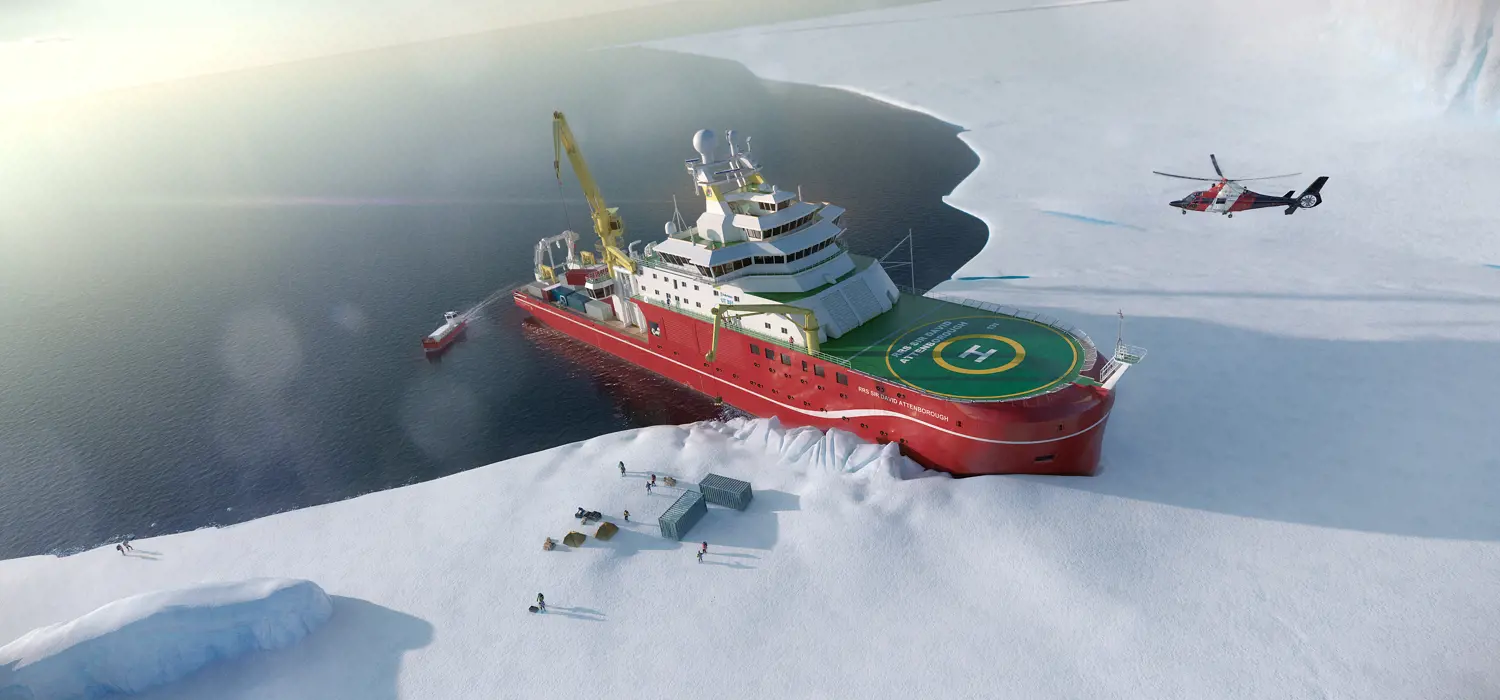
Creating an ice-breaking ship for climate research
The RRS Sir David Attenborough was designed to be used for climate change research in some of the most remote and inhospitable regions in the world.
The Royal Research Ship(RRS) David Attenborough, is a 129-metre-long vessel which pushed maritime engineering to its limits. It was designed to be used for climate change research and can break through ice. Operated by the British Antarctic Survey, it enables scientific investigations in some of the most remote and inhospitable regions in the world.
Key design features and capabilities
This ship was designed for research purposes, therefore it has some unique design features and capabilities.
- The ship is 129m in length.
- 60 days at sea without resupply.
- Specially shaped hull to break through ice up to 1.5m thick.
- Hull designed to minimise underwater radiated noise which could impact recorded data.
- The ship was designed to be able to launch and recover a variety of aerial and robotics systems.
- Accommodation for 60 scientists and support staff
- This ship has a moon pool; a vertical shaft for deploying underwater remotely operated vehicles without having to deploy them over the side. Boaty McBoatface is a long range autosub, one of the several autonomous unmanned vehicles for exploration and data collection.

Environmental design features
The RRS Sir David Attenborough has to follow strict environmental rules set out by the International Maritime Organisation (IMO) to prevent the pollution of the maritime environment.
- Engine efficiency - The four main engines are designed to be as efficient as possible. A small harbour generator is used to operate the vessel when in port without the need for the main engines.
- Batteries - The ship utilises batteries when possible to reduce the vessel’s fuel consumption, emissions, noise and vibration.
- Sewerage - There are two sewerage treatment tanks onboard to meet standards when at sea. In areas like the Antarctic where zero waste water is allowed to be released the ship has holding tanks for storing waste for up to 45 days.
- Noise - The ship was designed to create minimal underwater radiated noise which could otherwise impact ocean wildlife and test results when collecting data at sea.
Factfile
- Project goal
- Design a ship capable of carrying out research in some of the most remote and inhospitable regions in the world
- Key considerations
- Quiet enough to not impact data, able to house a large number of scientists and able to launch a variety of unmanned vehicles and submarines
“This ship is going to be key to the future salvage of our planet or at least its preservation.”
— Sir David Attenborough
Ingenia article
Read the full-length article on the development of the RRS David Attenborough in Ingenia, the free magazine which focuses on all aspects of engineering.
Think engineering could be for you?
Become an engineer




